Teasel, Indian Teasel, Fuller's Teasel - Dipsacus sativus
|
Dipsacus sativus - Teasel, Indian Teasel, Fuller's Teasel. Note that the imbedded text in the photos say Teasel and Dipsacus sp. rather than being more specific - that's due to some doubts about Dipsacus sativus (Indian Teasel) being the correct identification, so I can change easily if someone convinces me that these are one of the other two Dipsacus found in North America, with all three species being reported in Virginia, where these photos were taken. Dipsacus sativus has the narrowest distribution of these three species (there are about 15 species worldwide). D. laciniatus (Cutleaf Teasel) is found in 20 states, and D. fullonum (Common Teasel) has the widest distribution, being found in 41 states.
Dipsacus sativus and Dipsacus fullonum are both also known as Fullers Teasel because they were used in the fulling process - making woolen cloth softer and thicker by various processes including pulling barbed tools (the dried heads of Teasel among them) across the surface of the cloth. Dipsacus sativus was more likely the Teasel preferred by fullers due to the recurved receptacle spines.
Found in:
CA, NY, OH, OR, PA, VA | 
Distribution of Dipsacus sativus in the United States and Canada:
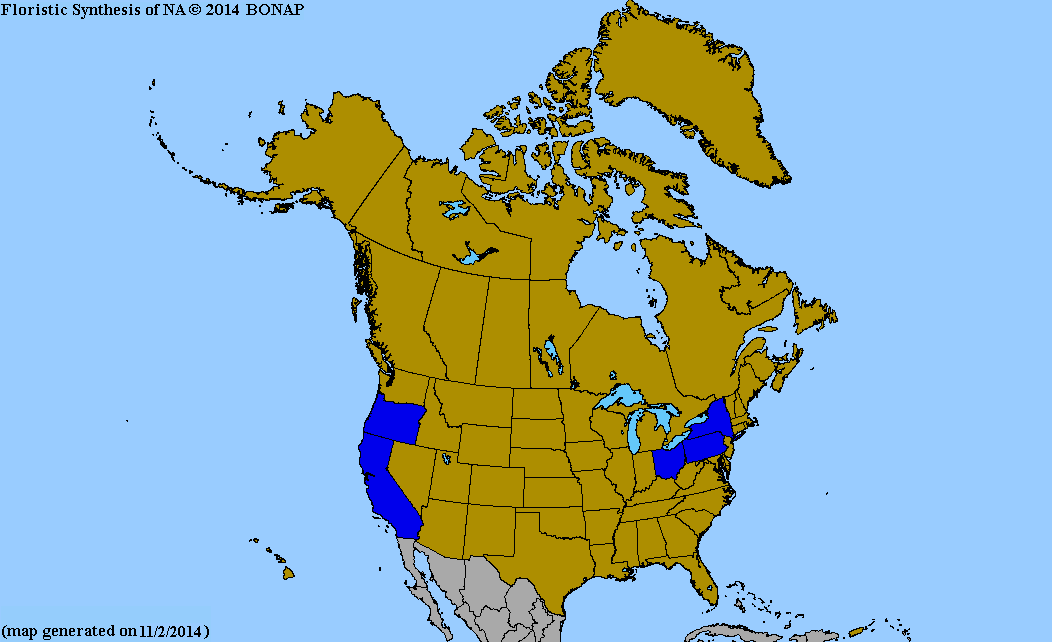
Map courtesy of The Biota of North America Program.
Map color key
Search Our Database: Enter any portion of the Scientific, Common Name, or both.
Do a general Google search of the entire site:
#ad
 Follow USWildflowers on Twitter
#ad
| | Site: Botetourt County, VA Date: 2013-August-23 | Photographer: Gerald C. Williamson
Nikon D7000
Tamron SP 90MM f/2.8 AF Macro | | The flowers of both Dipsacus sativus (here) and D. laciniatus are usually white, while those of D. fullonum are normally pink or purple. The flowers start blooming in the upper middle of the inflorescence, and bloom in both directions. | | 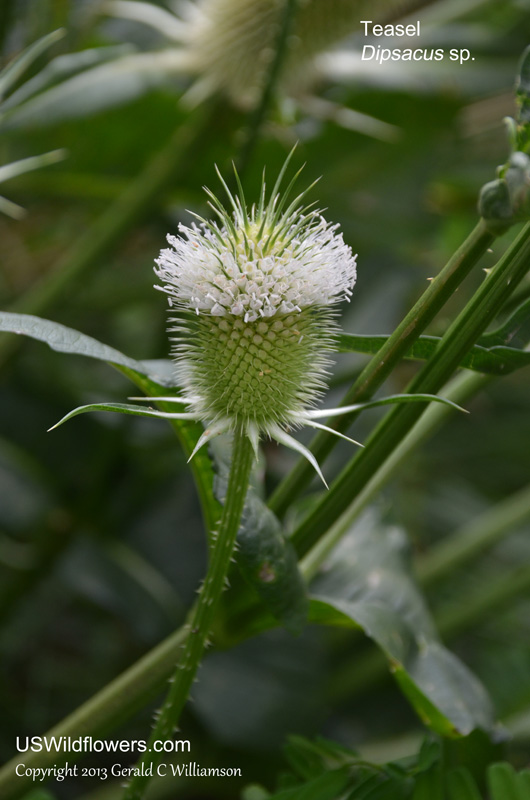
| | Site: Botetourt County, VA Date: 2013-August-23 | Photographer: Gerald C Williamson
Nikon D7000
Tamron SP 90MM f/2.8 AF Macro | | The involucre bracts of Dipsacus sativus (this plant) and Dipsacus laciniatus (Cutleaf Teasel) spread, with relatively little curve. Those of Dipsacus fullonum (Common Teasel) curve upwards, frequently extending above the top of the inflorescence. | | Click on the photo for a larger image
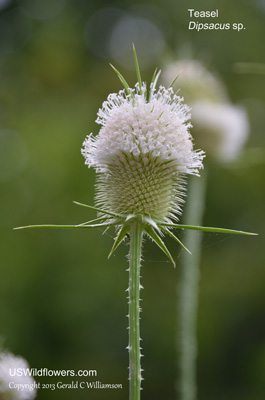
| | Site: Botetourt County, VA Date: 2013-March-23 | Photographer: Gerald C Williamson
Nikon D7000
Tamron SP 90MM f/2.8 AF Macro | | The florets of Teasel have 4 lobes which are generally of unequal length. The 4 stamens are interior to the flower, and the 2-lobed stigma is on a thin, exserted style. If you click on the photo and look closely at the larger image, you can see the calyx spines beginning to curve, an indicator of D. sativus; they appear to be mostly straight until the flower opens, and will remain straight in D. fullonum. | | Click on the photo for a larger image
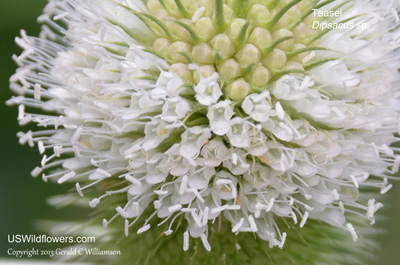
| | Site: Botetourt County, VA Date: 2013-August-23 | Photographer: Gerald C Williamson
Nikon D7000 | | Teasel will usually have a few branches, generally in the lower part of the plant. It can grow in large colonies, creating significant thickets. Indian Teasel and Common Teasel can grow to 9 or 10 feet tall, although 5 or 6 feet is more common; Cutleaf Teasel can be slightly taller, up to about 12 feet. | | Click on the photo for a larger image
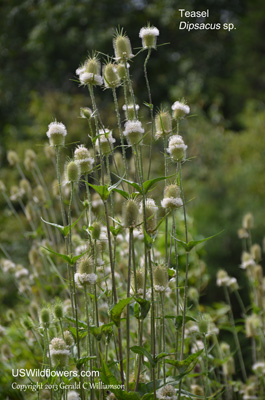
| | Site: Botetourt County, VA Date: 2013-August-23 | Photographer: Gerald C Williamson
Nikon D7000 | | Teasel has rosettes of basal leaves, as well as opposite stem leaves. The stem leaf pairs are fused at the base, widely in D. sativus, more narrowly fused in D. fullonum. D. laciniatus leaves are deeply lobed. The leaves of D. sativus and D. fullonum may be entire or toothed. Teasel stems are "armed" - they have prickles. As you can see here, Teasel may share habitat with Common Ragweed. | | Click on the photo for a larger image
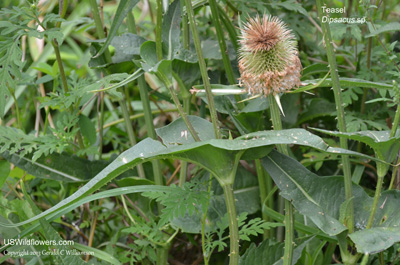
|
References used for identification and information:
|
|
| |
| #ad
|
|







